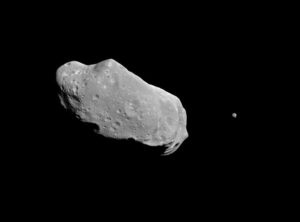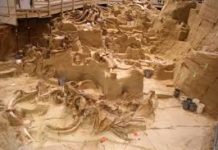 Some hundreds of millions of years ago, a huge asteroid is thought to have collided directly with planet Earth, resulting in the extinction of a majority of species across the globe. Back then, dinosaurs, plants, fungi, bacteria, viruses, fish, crustaceans, and all other organisms didn’t have the slightest idea of what technology was, even basic stone tools or clothing.
Some hundreds of millions of years ago, a huge asteroid is thought to have collided directly with planet Earth, resulting in the extinction of a majority of species across the globe. Back then, dinosaurs, plants, fungi, bacteria, viruses, fish, crustaceans, and all other organisms didn’t have the slightest idea of what technology was, even basic stone tools or clothing.
Today, the world is blessed with humans that have relatively recently developed all sorts of technology. In the past 30-odd years, the Internet started as a technology once expected to connect nobody but academicians wanting to share complex works of research with one another, though it’s currently used by over half of the global population. Large mobile phones – so large people had to carry them around in suitcases – evolved into handheld smartphones that can be used for everything a full-fledged modern computer can do. Humans can even fly complex technology to planets hundreds of millions of miles away and pilot rovers on the surface of Mars for years at a time.
However, one thing humans can’t reliably do is detect asteroids hurling through space at supersonic speeds. Even though a medium-sized asteroid could kill billions of people and disrupt life as we know it, government nor privatized space companies have been able to detect asteroids with any regularity.
According to NASA, the official government space agency of the United States – it’s one of the most well-developed such organizations across the globe – a relatively small asteroid was found in the wee hours of the morning of Saturday, June 2, 2018. Thankfully for the survival of all organisms on planet Earth, the interplanetary mouse of an asteroid wasn’t large nor medium-sized and collectively burned up upon entry to the Earth’s atmosphere.
Once named ZLAF9B2, the six-foot-wide asteroid was renamed Asteroid 2018 LA almost directly before it went into flames in the relatively thin atmosphere of the third rock from the Sun.
Researchers in Arizona at the Cataline Sky Survey were the first to locate Asteroid 2018 LA. According to the lead astronomer of the Center for Near-Earth Object Studies of the United States’ NASA, Paul Chodas, Asteroid 2018 LA was only the thirst asteroid to be detected before it slammed into Earth’s atmosphere. Fortunately, all three of those detected asteroids didn’t post a significant threat to the blue-and-green marble we call home.











